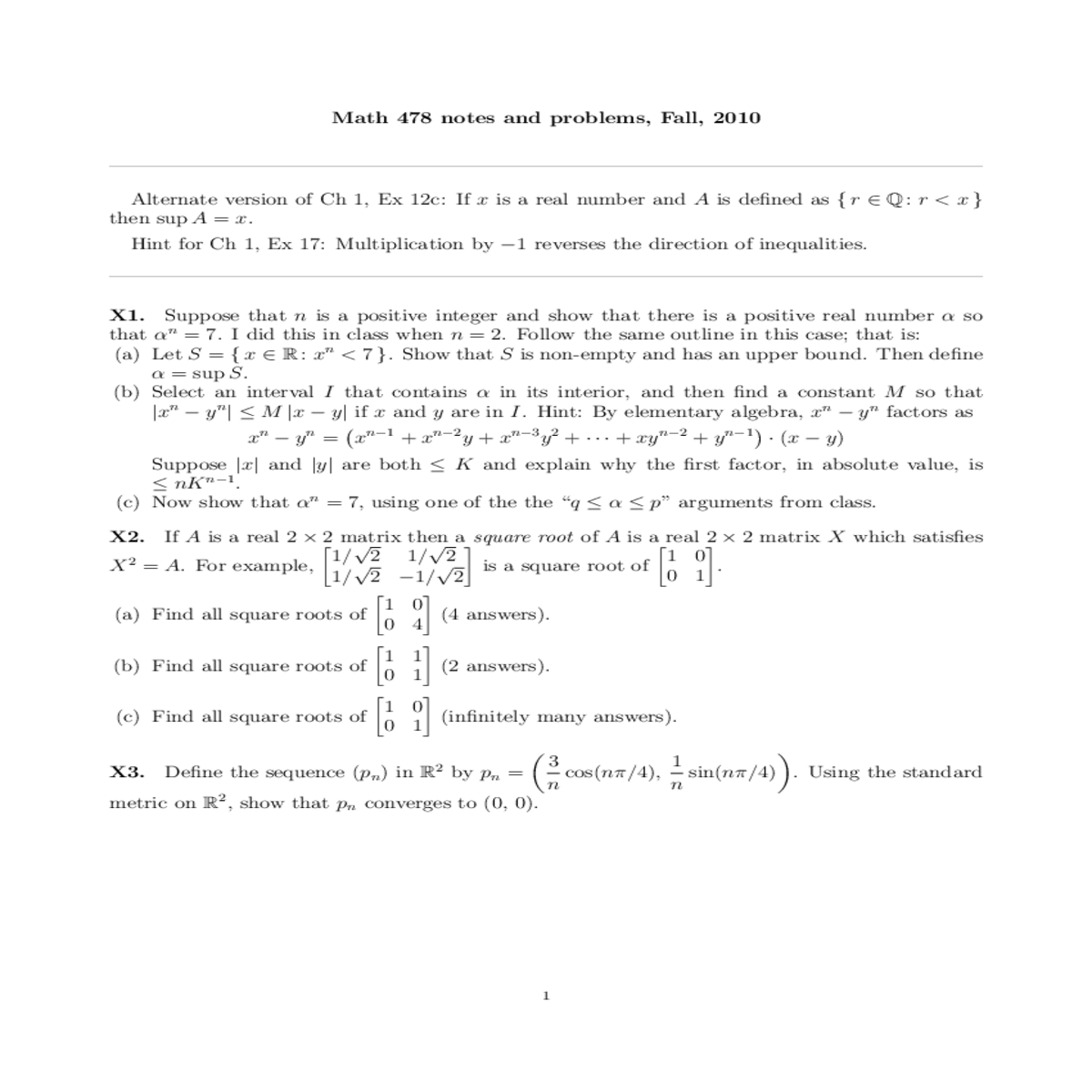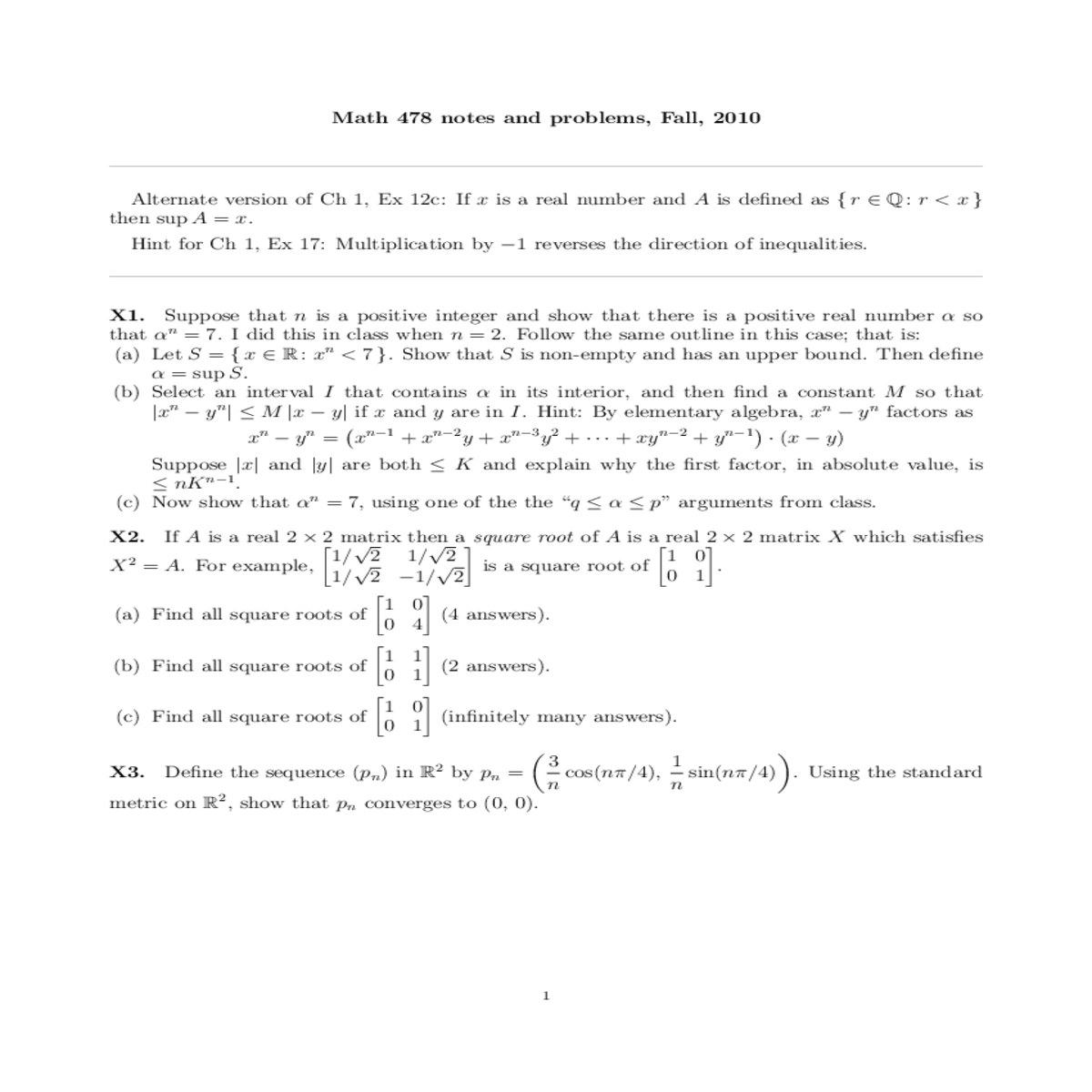Called the barycentric coordinates the interval
Math 478 notes and problems, Fall, 2010
| then sup A = x. Alternate version of Ch 1, Ex 12c: If x is a real number and A is defined as { r ∈ Q: r < x } |
|---|
Hint for Ch 1, Ex 17: Multiplication by −1 reverses the direction of inequalities.
1
2
Lemma 2. Suppose (M, d) is a metric space, p and q are in M, and r is a positive real number.
(The same is true for any radius t with 0 < t ≤ s, but you should prove it just for s.)
s =b − x t =x − a
b − a, b −a,
so s is the proportional distance from x to b and t is the proportional distance from x to a, where“proportional” refers to the distance from a to b. For example, a has barycentric coordinates (1, 0), b has barycentric coordinates (0, 1), and the midpoint of [a, b] has barycentric coordinates (1 2,12).
(c) Suppose x has barycentric coordinates (1 4,
34) in I. Show that x ∈ I2 and the barycentric coordinates of x in I2 are (3 4,14).
(d) Now refer to the construction of the middle-third Cantor set C. Show, by induction, that
Prove this by contradiction: Suppose there is an infinite sequence Mα(xn) of such balls. Can this sequence xn of the centers of these balls have a convergent subsequence?
X8. Problem X7 was used to prove the equivalence of sequential compactness and covering compactness for metric spaces. Using covering compactness we can strengthen X7 as follows:





